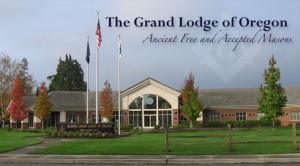No one knows with any certainty how or when the Masonic Fraternity was formed. A widely-accepted theory among Masonic scholars is that it began from the stonemasons’ guilds during the Middle Ages. The language and symbols used in the fraternity’s rituals come from this era. The oldest document that makes reference to Masons is the Regius Poem, printed about 1390, which was a copy of an earlier work. In 1717, four lodges in London formed the first Grand Lodge of England, and records after that are much more complete.
Within thirty years, the fraternity had spread throughout Europe and to the American Colonies. Freemasonry became very popular in colonial America. George Washington was a Mason; Benjamin Franklin served as the head of the fraternity in Pennsylvania, as did Paul Revere and Joseph Warren in Massachusetts. Other well-known Masons involved with the founding of America included John Hancock, John Sullivan, Lafayette, Baron Fredrick von Stuben, Nathanael Greene, and John Paul Jones. Another Mason, Chief Justice John Marshall, helped to shape the Supreme Court into its present form.
Over the centuries, Freemasonry has developed into a worldwide fraternity emphasizing personal study, self-improvement, and social betterment via individual involvement and philanthropy. During the late 1700s, it was one of the organizations most responsible for spreading the ideals of the “Enlightenment“…the dignity of man and the liberty of the individual, the right of all persons to worship as they choose, the formation of democratic governments, and the importance of public education. Masons supported the first public schools in both Europe and America.
During the 1800s and early 1900s, Freemasonry grew dramatically. At that time, the government had provided no social “safety net”. The Masonic tradition of founding orphanages, homes for widows, and homes for the aged provided the only security many people knew.
The following videos supply additional information on Freemasonry:
Today in North America, the Masonic Fraternity continues this tradition by giving over $2 million each day to causes ranging from operating children’s hospitals, providing treatment for childhood language disorders, treating eye diseases, funding medical research, to contributing to local community service, and providing care to Masons and their families at Masonic Homes.
The four million Masons worldwide continue to help men and women face the problems of the 21st century by building bridges of brotherhood and instilling in the hearts of men ideals for a better tomorrow.
Organization of Freemasonry
Freemasonry is the oldest fraternal organization for men in the world, and its organizational structure shows its age. The basic organizational unit of the fraternity is the lodge. These local lodges are generally referred to as “blue” or “craft” lodges. The term is believed to have come from the lodges (shelters) constructed at the building sites of cathedrals and castles during the Middle Ages. Masons worked and lived in these shelters.
Each lodge is headed by an officer called the “Worshipful Master”. “Worshipful” means “highly respected” or “honored“. The term comes from the judicial system of England and carries no religious implication… lodge members do not “worship” the Worshipful Master. “Master” means “leader” or “best qualified” as in “Concert Master” or “Master Architect”. In France, the term “Venerable” is often used instead of “Worshipful”.
Each officer of a lodge has a title that originated during the Middle Ages. These titles may vary somewhat from state to state, but in general the officers and their contemporary equivalents are:
Click here to view the duties of each of the Lodge officers.
Until 1717, each lodge of Masons was autonomous. On June 24, 1717, four of the lodges operating in London, England met together to form the first Grand Lodge of England. It became the first administrative or policy-making body of Freemasonry.
Masonic lodges still retain autonomy over their own finances, activities, officer elections, fundraising, and joining ceremonies. Administratively, each State or Province has a Grand Lodge which coordinates activities, serves as a central source of record keeping, and performs other administrative and policy functions for the fraternity. The state leader is called the Grand Master of the Grand Lodge. He has broad powers in overseeing the progress of the fraternity and while there is no national spokesperson for the fraternity, within his own state (Jurisdiction), he is the chief spokesman.

Oregon’s Grand Lodge is located in Forest Grove.
Click here to go to top of page

